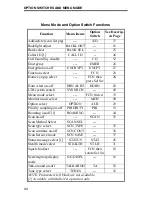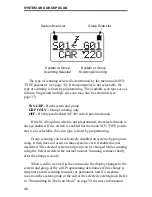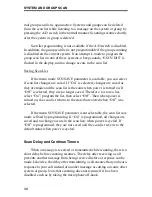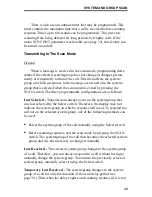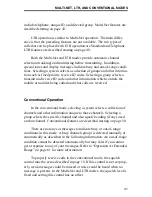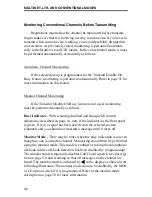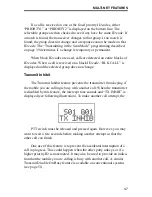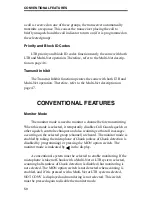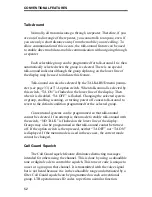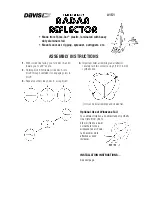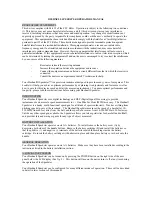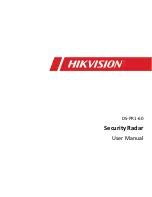
MULTI-NET FEATURES
46
message and exit this mode, press the FCN option switch again. This also
occurs automatically 2 seconds after a change is made or 8 seconds after
no changes are made.
Up to eight status conditions such as “AT SITE”, “LEAVING”, and
“LOADING” may be preprogrammed by your system operator. The
selected status condition along with the unique ID of your transceiver is
then displayed on the dispatcher’s console whenever the transmitter is
keyed.
Caller Identification
The caller identification feature displays the four-digit unique ID of
the calling mobile. It is displayed on the bottom line as “UI XXXX”
alternately with the group alpha tag.
This feature can be turned on and off by the CALL ID menu param-
eter (see page 33). If this menu parameter is not available, the caller ID
feature is fixed in the on or off mode by programming. This feature is
also programmed on individual groups by your system operator. If it is
disabled on a group, the unique ID code is not displayed even if this
feature is enabled.
Calls on Priority and Block ID Codes
Two fixed priority and a block of receive ID codes can be
programmed. These codes are in addition to the receive and transmit ID
code selected by the group select function. Calls on the fixed priority and
block ID codes are received regardless of which group is selected or
group scanning. All that is required is that the system programmed with
those codes be selected or scanned.
Calls on the fixed priority ID codes have a higher priority than calls
being received on other ID codes. If a call with a higher priority is
detected while receiving a call, the current call is immediately dropped
and the higher priority call received. Telephone calls are not interrupted
by priority calls.



